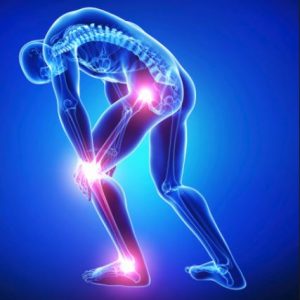If you’re looking for a gentle way to reduce the pain that comes with chronic conditions like rheumatoid arthritis (RA) or osteoarthritis( OA), hypnosis may just do the trick. Studies show that more than 75% of people with arthritis and related diseases experience significant pain relief using hypnosis. Forget what you’ve seen in movies about hypnosis. Today’s practitioners are using it to give patients an additional tool to help manage their pain.
 Learning to Relax with Hypnosis
Learning to Relax with Hypnosis
Hypnosis isn’t about convincing you that you don’t feel pain; it’s about helping you manage the fear and anxiety you feel related to that pain. It relaxes you, and it redirects your attention from the sensation of pain. In a hypnosis session, which usually lasts 10-20 minutes, you will likely start by focusing on your breathing to help you relax.
Then the hypnotist will instruct you to imagine a pleasant place and describe it in detail, refocusing your attention from something that triggers negative emotions to something that will activate positive emotions, such as being at the beach.
If your mind is off to the beach, and you’re imagining the warmth of the sun, the cool of the breeze, the sand at your feet, you’ll be less focused on your pain – and ready for the indirect suggestion of how to react to pain in the future.
It might sound something like this: “You will continue to feel this same sensation of pain, but you’ll be much less distressed about it, much calmer, much more at ease, not worried about it.”
Practice Makes Perfect
Hypnosis isn’t a one-shot treatment. At first, it can be part of regular psychotherapy sessions in a doctor’s office. Hypnosis typically helps  relieve pain in just 4 to 10 sessions. But some people benefit faster and others not at all. The goal is to teach patients the technique so they can use it on their own when pain strikes.
relieve pain in just 4 to 10 sessions. But some people benefit faster and others not at all. The goal is to teach patients the technique so they can use it on their own when pain strikes.
Some practitioners create recordings for patients that they can play to lead themselves into the hypnotic process. Some patients prefer to come up with their own script and not rely on a recording or the therapist’s voice to activate the process when pain strikes and they need it.
Learning hypnosis takes practice, and some people learn it more easily than others. Practice when you feel little or no pain; when you’re in a lot of pain, it can be harder to do.
Hypnosis Works for Children
Hypnosis is a tool you also can give a child to help him take control. When he feels pain, he can do something about it immediately without having to wait until mom gets there with the pills or for the pills to take effect. Having hypnosis as a tool also helps eliminate stress that comes from not having control.
For children, creating an active mental escape may be necessary. Rather than relaxing at the beach with a book, a child may want to imagine playing on the playground or kicking a soccer ball down the field.
 Is Hypnosis Right for You?
Is Hypnosis Right for You?
Some people respond to hypnosis better than others, but there’s no harm in trying it. It has no side effects and if it doesn’t work for you, you can stop at any time. But many people report significant reduction in pain and gain a simple tool for easing it that they can use any time.
To find a qualified hypnotherapist, ask your doctor for a referral or contact the Society for Clinical and Experimental Hypnosis or the American Society for Clinical Hypnosis. Health insurance may cover hypnosis for pain therapy performed by a medical or psychological professional. (By: Jenny Nash // Arthritis.org)









